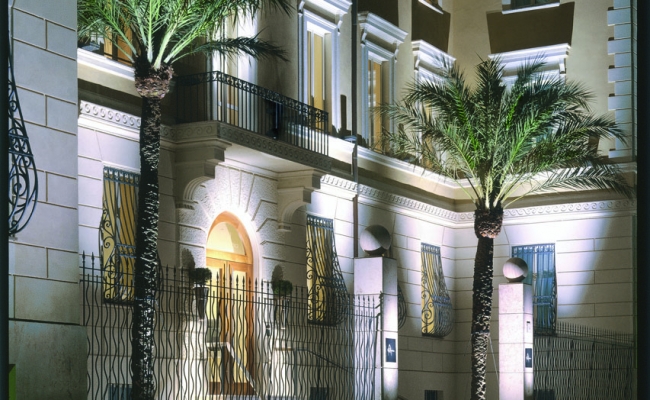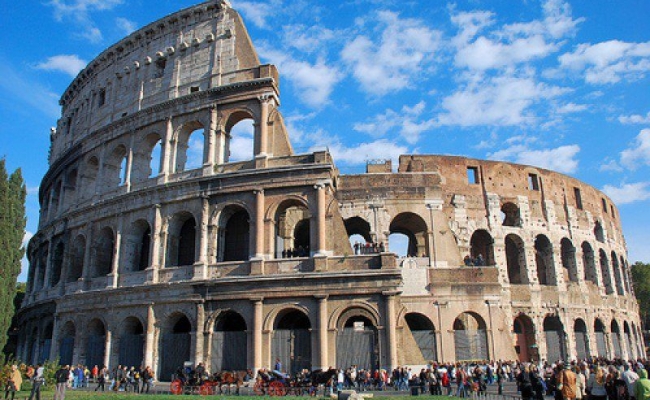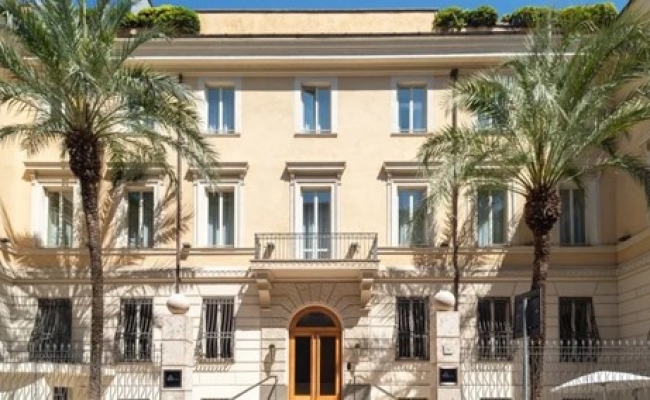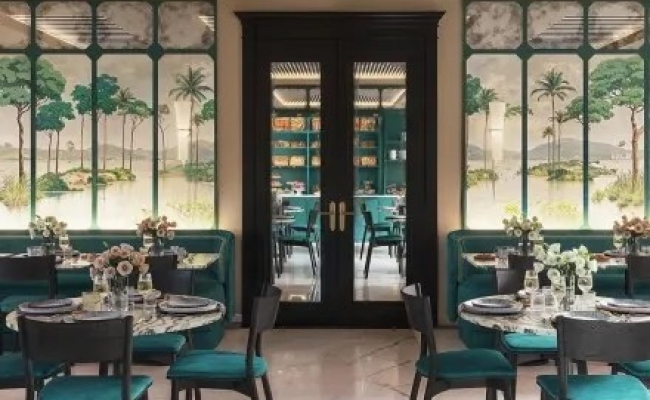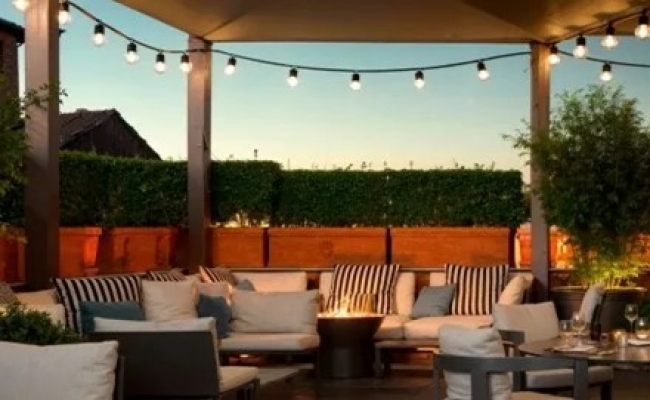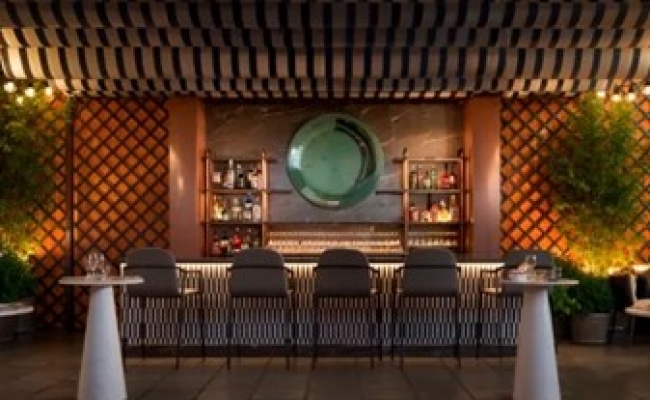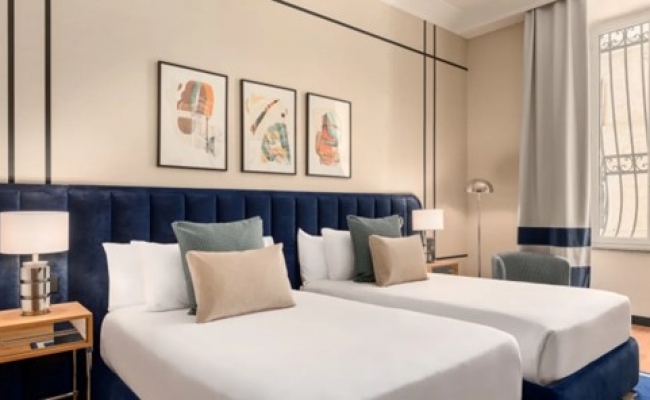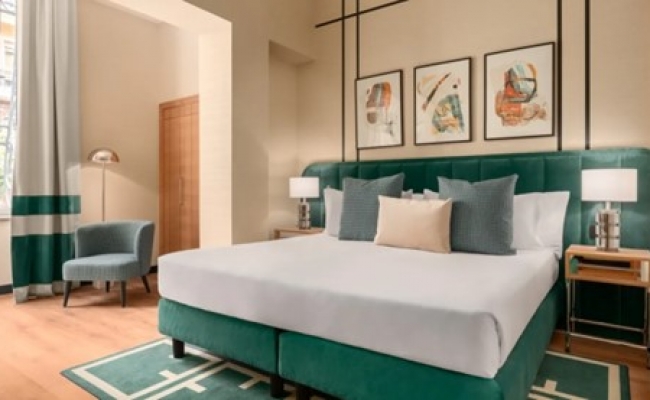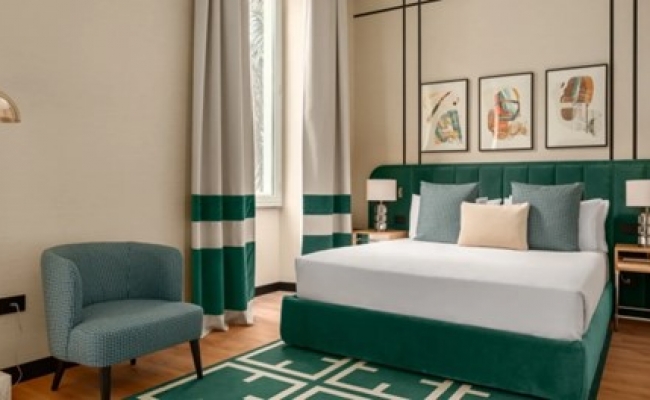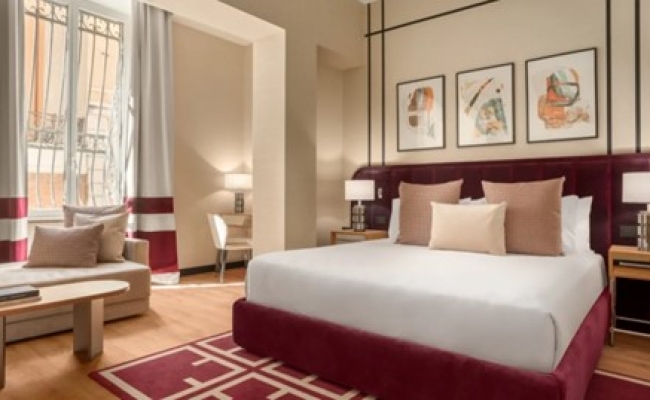Mia Hotel (formerly Hotel Capo d’ Africa)
Rome, Italy
Mia Room Mate Collection, the former Capo d'Africa, is a 4-star hotel in the heart of Rome. Next to the famous Colosseum and the Roman Forum, it leaves no one indifferent. Its modern design and spacious rooms are thought out to offer you the rest and comfort you deserve. Don't miss the opportunity to enjoy our breakfasts on the large terrace overlooking one of the city's main tourist attractions. The hotel also offers several rooms for organizing events, equipped with all the audiovisual resources and the latest technology.
Mia Terrace enjoys a privileged location in the heart of Rome, and is the perfect place to unwind while enjoying spectacular views of the Colosseum. With an elegant and exclusive atmosphere, it offers a careful selection of cocktails and a varied gastronomic offer inspired by the Italian tradition. Whether it's breakfast at sunrise in the Eternal City or dinner under the stars, Mia Terrace promises an unforgettable experience in a unique setting.
Discover the new Mia Room Mate Collection, in the former Capo d'Africa, through our photo and video gallery and be inspired by everything our hotel has to offer. Located in the heart of the historic centre, Mia Room Mate Collection is the perfect choice for those who love culture and the convenience of having the best of Rome less than a five minutes' walk away.
Every detail has been meticulously thought out for you to enjoy a unique experience: from the bright and cosy rooms to its large terrace with spectacular views of the Coliseum, where you can have breakfast, and its versatile rooms for holding all kinds of events.
Let your journey begin!
BARS AND RESTAURANTS
The district’s cafés, pubs, tearooms and restaurants are quickly rising to the top of the Roman popularity charts. The Divinare wine bar at Via Ostilia 4, for example, is a French-style establishment serving a vast selection of top-quality wines together with sophisticated cold dishes and a careful selection of cheeses, salami and pralines. The splendid coffee comes from an antique machine still in excellent working order. Café Café at Via S.S.Quattro 44 is open from 10 a.m. to 2 a.m. and offers typical Mediterranean dishes, Spanish and Greek above all, grilled cheese, salads, and a fine selection of wines. Afternoon tea is served with a choice of 60 different types. The setting is rustic with sunny yellows and blues.
Art lovers can visit the new Galleria Arte & Pensieri in Via S.Giovanni in Laterano, operated by the cultural association I Diagonali, which periodically organizes shows for up-and-coming artists as well as exhibitions of work by established figures such as Turcato, Vedova, Perilli, Pace, Accardi and Uncini.
Those who revel in the colonial atmosphere will love Agadez in Via S.Giovanni in Laterano, an "ethnic-chic" shop with furnishing and objects from Niger that combines African jewelry with the spirituality of feng-shui. Half pub and half tearoom, La Mosca Bianca at Via Capo d’Africa 30/a has always been a meeting point for young people. Its bill of fare now includes a long list of teas from India and China.
The district’s gastronomic panorama includes addresses for all tastes and requirements. Delicious food but also fashion, starting with The Crab at Via Capo d’Africa 2, renowned for its seafood specialties, especially crustaceans and shellfish direct from Brittany. You must sample the Catalan-style lobster, platter of fresh shellfish, and steamed crustaceans.
Perennial favorites include the Taverna dei Quaranta in Via Annia, Il Bocconcino, Ai Tre Scalini in Via SS. Quattro, the Antica Hosteria in Via Giovanni in Laterano, and the pizzeria Li Rioni in Via dei Querceti, mainly Roman eateries with typical regional specialties enhanced by the characteristic local taste.
Two truly singular addresses to end with: the brand new Colosseum Party at Via dei SS. Quattro 34/35, eccentric, over the top, totally kitsch, with a folkloristic floorshow including gladiators, belly dancers and fire-eaters, and Magna Roma at Via Capo d’Africa 26, featuring Roman dishes in an ancient Roman setting complete with a triclinium of wooden benches to recline on while eating.
But the Celio leads a double life. By night it is the village atmosphere that emerges with bright lights, animated bustle and music, but by day the historical aspects take over with tourists in search of the many treasures this locale has to offer.
The Colosseum, where the emperor and the wealthiest citizens presented spectacles of mortal combat involving gladiators and wild animals, is Rome’s greatest amphitheater. The architecture was very elegant but also extremely practical. Eighty arched entrances provided easy access for 55,000 spectators, who were protected from the sun by an enormous awning. Stone stripped from the facing was used during the Renaissance to build palaces, bridges and parts of St. Peter’s.
Call or e-mail for rates and availability
Client Comments
"People are great, hotel is wonderful, quiet area without the madness of the Spanish Steps."
